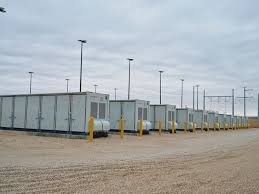NEW DELHI, April 26: G7 economies are currently targeting doubling of renewable energy capacity by 2030, falling short of the tripling goal agreed at the UN climate conference in Dubai last year, according to an analysis by global energy think-tank Ember.
At the UN’s COP28 climate change conference in December, world leaders, including all G7 members, reached a historic agreement to triple global renewable energy capacity by 2030.
“The G7 needs to set a goal to triple their renewable capacity,” said Katye Altieri, electricity analyst at Ember.
“Last year, the G7 agreed targets for solar and offshore wind. Given the COP28 agreement, these goals are now outdated and need to be aligned with a tripling of global renewables. The acceleration of solar shows the renewables goal is increasingly achievable,” she said.
According to the International Energy Agency, tripling global renewable energy capacity and doubling energy efficiency is crucial to limiting the average temperature rise to 1.5 degrees Celsius.
A global tripling does not mean that every country is required to triple its renewables capacity – some will do more, some less – but evidence shows that G7 countries in aggregate would require a tripling.
According to Ember’s 2030 Global Renewable Target Tracker, the G7 economies are collectively targeting just over a doubling of 2022 capacity from 0.9 terawatts (TW) at the end of 2022 to 2 TW of renewables capacity by 2030.
A tripling of renewable capacity would require the G7 to reach 2.7 TW by 2030, leaving a 0.7 TW gap between current targets and a tripling-aligned goal.
Italy, this year’s host of the G7, along with Germany and the UK, are leading the way with 2030 targets that are more than doubling of the 2022 capacity.
However, France and Japan are lagging behind their G7 partners with targets well below a tripling.
The US and Canada do not have official targets, though modelling studies indicate that US policies would deliver an almost-tripling while Canada will hardly see an increase.
This weekend, the G7 Ministerial on Climate, Energy, and Environment in Italy presents an opportunity to translate the COP28 goal to triple renewable capacity into clear action.
Ember’s report recommends that the G7 commit to tripling their collective renewable capacity from 0.9 TW in 2022 to 2.7 TW in 2030 while acknowledging the gap in current ambition.
Earlier this week, an analysis by global climate science and policy institute Climate Analytics showed that none of the G7 members are on track to meet their existing emission reduction targets for 2030.
The G7 collectively aims to achieve a 40-42 per cent emission reduction by 2030, but existing policies suggest that it will likely achieve only 19-33 per cent by the end of this decade.
This is at best around half of what is needed and would lead to GHG emissions in 2030 exceeding a 1.5 degrees Celsius compatible level by around 4 gigatonnes of carbon dioxide equivalent.
Such a shortfall in ambition does not provide the leadership signal needed from the world’s richest countries, making up around 38 per cent of the global economy, and responsible for 21 per cent of the total GHG emissions in 2021, researchers of Climate Analytics said.
The G7 economies need to slash their emissions by 58 per cent by 2030 compared to 2019 levels to do their part to limit warming to 1.5 degrees Celsius, they said.
The G7 is made up of the United States, Britain, Canada, France, Germany, Italy, and Japan. Representatives from the European Union also attend its annual summits. (PTI)












